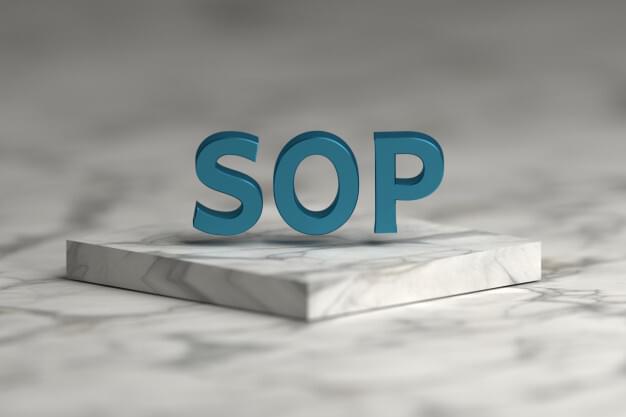
Your staff resigned, one after another, but you still try to keep yourself calm despite being under-pressure. You have to employ new staff to take over the positions of those who resigned. Unfortunately, the new staff are unable to cope with their job. You tried to have a heart-to-heart talk with them to understand their problems causing their inability to cope, but it is of little to no avail. It takes the new staff three months or more to completely be able to take over the job from the resigned staff. Time is running out, resources are diminishing. Your last option before things get worse? To be involved in the entire work process yourself, dealing with your clients directly in person. You not only are required to manage the business, you also need to be involved in the operations process – overall, an immensely heavy load for you to juggle.
The tendency to make mistakes is a rather typical characteristic of staff, especially newly-employed ones. Job mistakes occur in two major kinds, (i) cluelessness, where staff do not know what and how to execute a task; and (ii) carelessness, where staff are competent and already intensively trained, but the mistakes just happen to occur due to their negligence. Having type (ii) staff should be the main concern to your business. This may seem out of context now, but did you know that the human short-term memory could only retain seven things at a time? Well, this might be the answer to the existence of the type (ii) staff, the careless ones. But despite knowing this, most of the time, staff do not make mistakes on purpose as they know it would jeopardise their job position, especially in desperate situations.

As an entrepreneur, you have ambitions of operating a franchise, just like McDonald’s, 7 Eleven, and Tealive – to expand your business locally to internationally, and double up your profit. You watch local businesses in various industries grow to success, for instance, OldTown (food and beverages), dobiQueen (laundry), and MR DIY (retail). You keep dreaming big. But what is their key to thriving? How do they make it seem so easy, so effortless? It’s as if they do not have any problems dealing with the classes of staff as mentioned above.

Just like you, Gary, too, has the ambition of operating a franchise. Gary is currently in the retail sector, operating stores selling household items. After several years of operating his only store without any problems, Gary thought it was the perfect time to open a second branch. Things were not as beautiful as it seemed to be. Gary had difficulties handling his second branch, especially after an important employee resigned in his first branch. Gary had to constantly go back and forth the first and second branches to check on his staff, as the new staff of both branches were not as capable as he expected them to be.
Gary was lost. His life felt like it was all over the place. Gary had only one option, which was to get help from a CFO to get advice and solutions. Gary was fortunate to meet a CFO who was highly experienced in handling successful franchises to grow, both locally and internationally. The CFO’s suggestion? One word: SOP.

You most probably have heard the term “SOP” a lot of times in your entire life, but do you know what it is in depth? In essence, SOP is an acronym for Standard Operating Procedure, a step-by-step instruction prepared to outline any routine activities. SOP is able to help maintain the consistency of your business’ operations. It could be further simplified into the following:
STANDARD – Staff job list, a checklist of what needs to be done.
OPERATING – Originate end flow, a way to generate the process flow. Utilise the concept of ‘begin with the end in mind’ to determine your end result.
PROCEDURE – Play role, a demonstration of how things are done.
Now that you have a general idea of SOP, let’s explore the ways you could accomplish it, component by component.
1. STANDARD: Staff job list

Communicate with your staff and require them to come up with two lists:
a) Daily and weekly job list – “What do you do on ____?”
b) Most important task – ”What is your most important task?”
These lists are essential for you to find out what your staff need to do, not only on a daily/weekly basis, but also what needs to be settled first urgently. In addition to this, it helps you determine their job scope and whether they are performing their job as per required.
2. OPERATING: Originate end flow

A five-step (3+2) flow that streamlines your work process. Commence this procedure with the question “at the end of your process, what is the outcome?”. Once the outcome is determined, determine the entire process by working backwards from end to start! You have to ensure that every staff member is able to write their processes based on their job. The best way for you to trigger their mind is by asking questions which has to be answered by numerical sequence, for instance:
1. What is the last step of your job?
4. What needs to be done before you proceed to your final step?
3. What is the major process?
5. What needs to happen immediately after you start your job?
2. How do you start this job?
3. PROCEDURE: Play the role

Remember this acronym – IUIUM. What does this represent?
I : I tell U – The senior must tell the junior (new staff) what to do, verbally.
U : U repeat Me – The junior must repeat what the senior said.
I : I demo U – The senior demonstrates how things are being done.
U : U show Me – The junior must show the old staff how to do it.
M : U feed Me back – Senior asks the junior to rate themselves (on a scale of 1-10, how do you think you’re doing? Comments and feedback are given to the junior, and find out how they aim to self- improve themselves by asking “how can you make it to 10?”. An important opportunity for interaction between seniors and juniors to discover areas for improvement.
This is an approach to duplicate a person by transferring skills from one individual to another. Do take note that the IUIUM procedure needs to be done concurrently to prevent any information from being forgotten by the juniors.
You may wonder what if your job is complicated and your job process cannot be represented in only 5 steps? How are you supposed to utilise the above approaches to build an effective SOP? There is always flexibility in work done, and therefore, you could still use the above methods but try to limit your process to 7 or a maximum of 9 steps. Do you recall that the human short-term memory could only retain seven things at a time? It all makes sense now, doesn’t it? If your process is too lengthy, you may find problems having your staff to follow your methods of getting work done. It is not all about the SOP in nature, it is about the people who need to do the task. An SOP is merely a guideline that assists your staff to get a job done in an organised manner. Thus, keep it as simple as possible to maintain the motivation of your staff. In other words, make it dummy-proof, where anyone who sees it can immediately understand what is being conveyed. If you want to learn more on how to take your business to next level, my book NEXT LEVEL BOSS – THE SECRETS reveal business secrets so that you can straight up model, simulate and duplicate to Read, Recruit and Lead people, Search, Spend and Multiply money.

So where does Gary stand after taking into account the CFO’s advice? His business is more organised and he managed to retain the operations of his second branch. Not just that, Gary has also successfully opened even more branches across the country. Up until today, Gary still diligently implements the use of SOP in his daily operations and as a result, Gary can now duplicate his staff more effectively and efficiently. Furthermore, the staff love the SOP and whenever necessary they can write SOP start from scratch.
